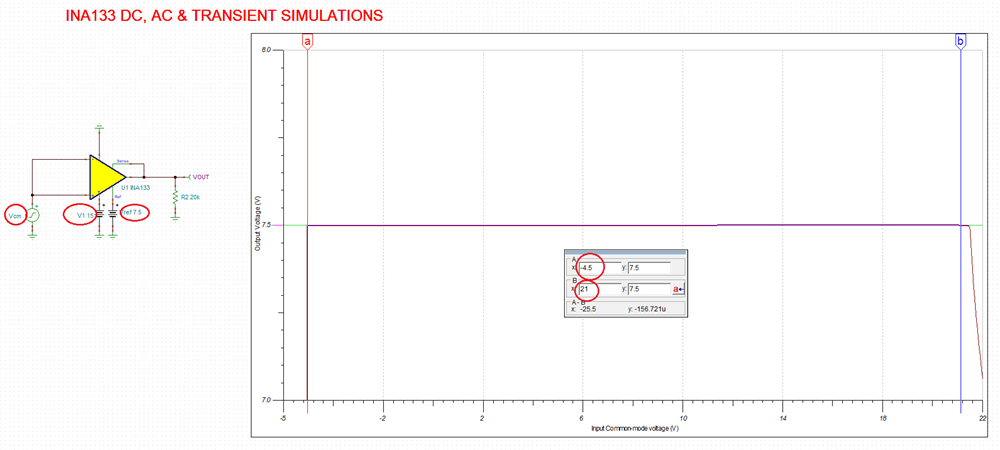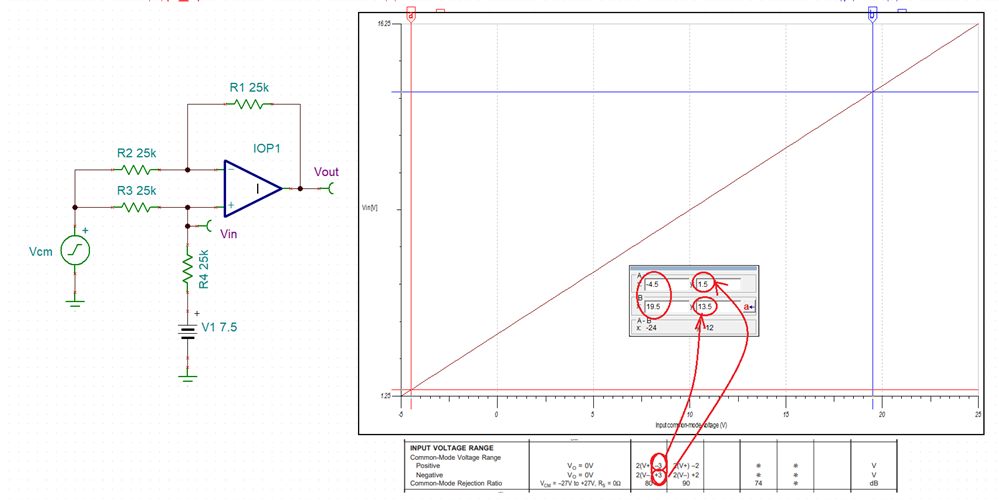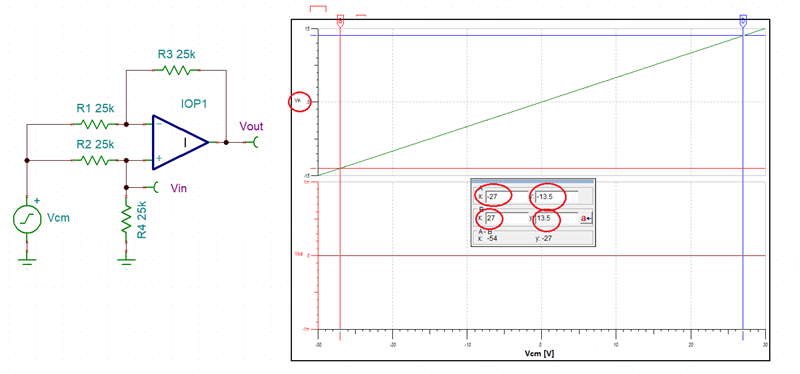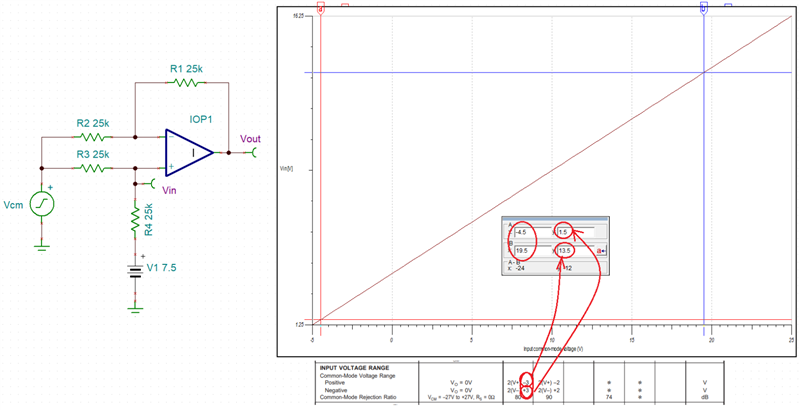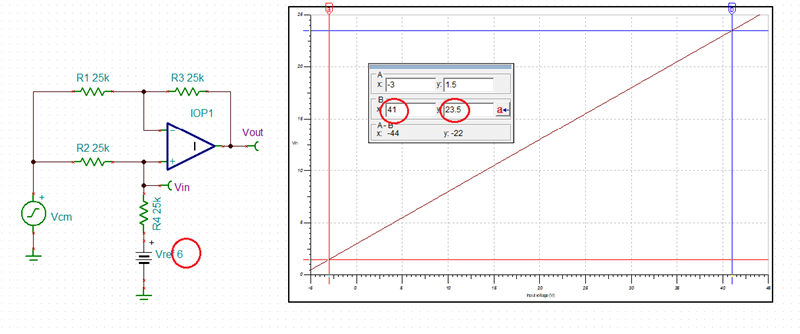Other Parts Discussed in Thread: INA148, INA149, , INA146
Hi Experts,
Seeking your assistance on this:
In one of our project we are using INA133U as a dfifference amplifier with single supply of 15V and Vref (pin1) voltage of 7.5V . The sense (pin 5) is shorted with output (Pin6). Can you please let us know the maximum and minimum common mode voltage input can be applied.
Suppose we want to change over to INA149 or INA148 due to higher common mode input voltage. Can you provide us relation between common mode voltage, single Supply voltage and reference voltage. This help us to calculate the maximum common voltage that opamp can handle when operating with a given single supply.
Thank you.
Rgards,
Archie A.
PS:
I found this usual FAQ
[FAQ] Common Mode Voltage Range vs. Input Voltage Range...
Would like to clarify, if working with opAmp (not comparator):
The input is still valid even if one of the input signals is beyond/outside Vrail/input specified limit, as long as their common mode voltage is within its range, correct?


